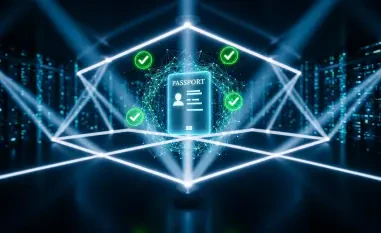What if a fleeting digital identity, meant to protect an organization, becomes the very key attackers use to unlock chaos? In the intricate landscape of cybersecurity, ephemeral accounts—temporary, randomly named credentials created for short-term privileged access—stand as both a safeguard and a silent threat. As companies race to secure their systems against relentless breaches, these accounts, often praised for minimizing standing privilege, may be creating blind spots that hackers eagerly exploit. This exploration delves into the paradox of ephemeral accounts, uncovering whether their convenience outweighs the lurking dangers.
Why Temporary Credentials Demand Attention
In a world where data breaches cost businesses an average of $4.45 million per incident, according to recent studies, controlling privileged access has become a non-negotiable priority. Ephemeral accounts, designed to exist only briefly before deletion, have emerged as a popular tool among IT and DevOps teams to limit persistent vulnerabilities. Their adoption within Privileged Access Management (PAM) systems reflects a shift toward dynamic security models, promising reduced risk by eliminating static, always-on admin accounts.
Yet, as corporate audits and cyber insurance requirements intensify scrutiny on access controls, the reliance on these transient credentials raises pressing concerns. Are they truly fortifying defenses, or are they introducing complexities that security teams struggle to manage? Understanding their role in today’s threat landscape is critical for any organization aiming to stay ahead of sophisticated cyberattacks.
The Dark Side of Ephemeral Access
Beneath the surface of convenience, ephemeral accounts harbor significant risks that can erode an organization’s security posture. Their randomly generated names—think “admin-temp-x7k9p2”—make it nearly impossible for security operations to track who initiated them, their purpose, or the actions taken. This lack of transparency creates a dangerous void, where unauthorized activities can slip through undetected.
Moreover, once deleted, these accounts often leave behind unresolved Security Identifiers (SIDs) in audit logs, muddling accountability. Incident response teams face a daunting task, piecing together fragmented records across disparate systems like PAM platforms and endpoint logs. Real-world cases have shown how a single compromised ephemeral account can grant attackers unchecked access to critical infrastructure, turning a temporary credential into a catastrophic breach.
Compounding the issue, the creation and elevation of such accounts mimic tactics used by malicious actors to establish persistence. Many organizations overlook key event monitoring, such as Event ID 4720 for account creation, allowing these activities to blend into the noise. The result is a delayed detection window, amplifying the potential damage from an intrusion.
Voices from the Field on Fleeting Credentials
Experts in cybersecurity are increasingly sounding the alarm on the pitfalls of ephemeral accounts. Richard Hosgood, PAM Principal Presales Engineer at One Identity North America, with over a decade of experience, cautions that their design often prioritizes ease over oversight. “The short lifespan and random naming of ephemeral accounts turn accountability into a puzzle security teams can’t solve quickly,” Hosgood emphasizes, drawing from extensive work with organizations facing audit challenges.
Industry forums and virtual sessions on identity security echo this unease, with many professionals advocating for alternatives like just-in-time (JIT) privilege elevation. Hosgood’s observations reveal a recurring pain point: even advanced PAM solutions struggle to deliver clear, unified audit trails for these accounts. During a breach, this gap forces teams into a reactive scramble, often too late to mitigate the fallout.
The consensus among specialists points to a need for reevaluation. While ephemeral accounts address certain risks, their implementation often lacks the robust controls required to prevent exploitation. This expert perspective underscores the urgency of rethinking how temporary access is managed in high-stakes environments.
Strategies to Tame the Ephemeral Threat
Addressing the vulnerabilities of ephemeral accounts requires a strategic pivot toward more traceable and controlled access models. One effective approach involves deploying an Identity Governance and Administration (IGA) system to create privileged accounts linked directly to identifiable users or applications. Naming conventions, such as appending “-ADMIN” or using personalized indicators, allow security operations to instantly recognize an account’s purpose and owner.
Another critical step is eliminating standing privilege entirely. Accounts should start with zero default access rights, with privileges granted only when necessary through JIT access protocols. This minimizes the attack surface, ensuring that even if credentials are compromised, they hold no inherent power without explicit activation.
Finally, organizations must bolster auditing by integrating PAM tools with endpoint systems for a cohesive view of account activity. Unified logging enables incident response teams to swiftly trace actions back to specific users or processes, cutting through the confusion of random identifiers. Adopting these measures not only mitigates risks but also restores clarity and control to privileged access management.
Reflecting on a Path Forward
Looking back, the journey through the complexities of ephemeral accounts revealed a stark truth: what was designed as a shield had often morphed into a liability. Security teams have grappled with obscured audit trails and undetected threats, paying a steep price for unchecked convenience. The insights from experts and the stark realities of real-world breaches paint a clear picture of the stakes involved.
Moving ahead, organizations must prioritize actionable reforms, embracing traceable naming, JIT access, and integrated logging as cornerstones of a safer strategy. Beyond immediate fixes, a broader commitment to evolving access controls promises to outpace the tactics of adversaries. By addressing these hidden perils head-on, businesses can transform a potential nightmare into a fortified defense, securing their digital frontiers for the challenges that lie ahead.













